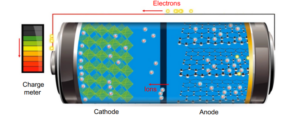We began discovering the problem through discussions with Ryan Berry, a senior chemical engineering student at Lafayette College, and Professor Van Asselt, mechanical engineering professor at Lafayette College, who have been researching compressed air energy storage. Ryan has been developing a small prototype over the past year and showed us how it works. Additionally, we toured the thermodynamics lab to better understand testing technology available to us. Next we dove into background research and read the introduction chapter of Thermal, Mechanical, and Hybrid Chemical Energy Storage Systems by Klaus Brun et al. Through background research, we learned that many states are aiming to run off of completely renewable energy by 2050 and there are problems associated with the time that energy is generated from sun and wind and when peak energy use occurs. This problem is only increasing as electric cars become more popular. Energy used to charge electric cars is highly condensed because car companies needed to satisfy customers who were used to pumping millions of years of condensed energy into their cars as gas stations. Therefore, electric cars are charged with a lot of electricity very fast.

Figure 1: Global growth of energy storage projects [1]
We learned about many thermal and mechanical energy storage technologies. These include hydroelectric power, flywheels, lithium-ion batteries, and more. The distribution of these technologies is shown in the following diagram:

Figure 2: Energy Storage Technologies [1]
Figure 3 shows a diagram of pumped hydroelectric power. This is a form of mechanical energy storage, but it is limited geographically and politically so we wanted to consider CAES instead.

Figure 3: Pumped Hydroelectric Power [1]
Figure 4 shows a lithium ion battery. Lithium ion batteries are excellent energy storage devices for small items such as electric vehicles, computers, watches, and flashlights. However, they do not scale to the power grid level well and there are limited rare earth mineral deposits. Such deposits can also be politically off limits. It is important therefore that other kinds of energy storage devices are developed.

Figure 4: Solid-State batteries charging by ion movement between electrodes [1]
The first and second laws of thermodynamics are requisite for understanding any kind of energy storage. The First Law of Thermodynamics governs the balance of energy for a defined system. The difference between the energy into a system and the energy leaving a system is the change in energy in a system as shown in the following equation:

Next, we individually conducted literature reviews and combined our knowledge as a team. We learned about underwater CAES, energy storage systems in parking lots for charging electric vehicles, and other CAES case studies. More information on the background research can be found in the background research section of the website.
Through all of these conversations and research, we began to develop constraints. One constraint was to be able to charge an electrical vehicle using the CAES. We want enough charge to come out fast enough to charge a car rather than to be trickling out. As electrical vehicles and other city buses become electric, it would be ideal to be able to charge these vehicles around cities using a CAES system because then these electric vehicles are truly running off of renewable energy.

Figure 5: Electric Vehicle Charging [2]
While there are several interesting applications of CAES, we decided to focus on charging electric vehicles in parking lots. This application is local to us compared to underwater systems or CAES in offshore wind turbines. The United States has very limited offshore wind energy compared to other countries such as the United Kingdom or Germany and Pennsylvania is a land-locked state. Moreover, electric vehicles are projected to greatly increase in numbers over the next twenty to thirty years and increased renewable charging capacity will justify their use.
The CAES system we are developing is a down-scaled prototype of what would be a mid-sized energy storage system. In the Spring semester, a team of chemical engineers joined us to model the efficiency and optimization of a larger scale system based on our prototype.
Sources:
[1] Thermal, Mechanical, and Hybrid Chemical Energy Storage Systems by Klaus Brun et al
[2]Electric Vehicle Charging by Insider
[ https://i.insider.com/6042a8ac44d8e300117b9655?width=1200&format=jpeg ]
[3]
EEI Celebrates 1 Million Electric Vehicles on U.S. Roads, https://www.eei.org/resourcesandmedia/newsroom/Pages/Press%20Releases/EEI%20Celebrates%201%20Million%20Electric%20Vehicles%20on%20U-S-%20Roads.aspx.
